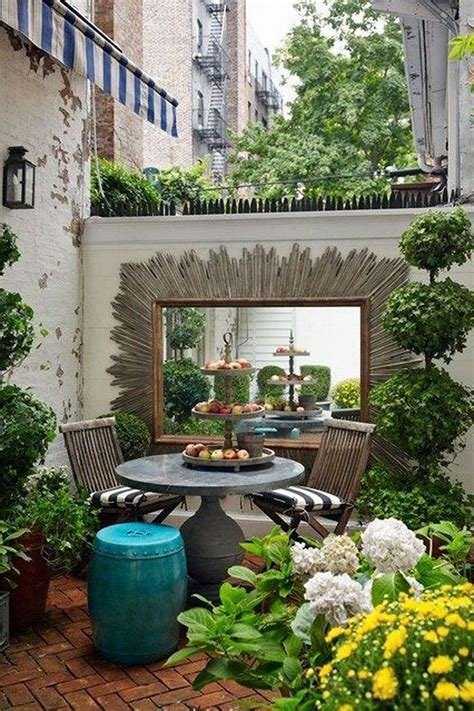Night Dress Etiquette: Dos and Don’ts for Formal Events
When it comes to attending formal events, one of the most important aspects to consider is the night dress you choose to wear. From the length and neckline to the fabric and color, there are several factors to keep in mind to ensure you adhere to the night dress etiquette. In this blog post, we will delve into the dos and don’ts of selecting the perfect night dress for formal events. We’ll cover everything from understanding different dress codes such as black tie, white tie, and cocktail, to tips for avoiding wardrobe malfunctions and ensuring the proper fit of your dress. Additionally, we’ll discuss the role of fabrics in night dress etiquette and how to accessorize your attire in a classy and sophisticated manner. By the end of this post, you’ll be equipped with the necessary knowledge to make a lasting impression at any formal affair.
Choosing the Right Length of Night Dress
When it comes to choosing the perfect night dress, one of the key decisions to make is the length of the dress. The right length can enhance your overall look and ensure you feel comfortable throughout the event. Whether you’re attending a formal gala or a casual dinner party, choosing the right length of night dress is essential for achieving the perfect balance of style and comfort.
For formal events such as galas and black-tie weddings, it’s important to opt for a floor-length gown. This elegant and timeless silhouette exudes sophistication and is the perfect choice for formal settings. On the other hand, for more casual events such as cocktail parties or dinner dates, a knee-length or midi dress is a stylish and versatile option. These lengths offer the perfect balance between formal and casual, making them suitable for a wide range of occasions.
When selecting the length of your night dress, it’s also important to consider your body type. For example, if you have a petite frame, a dress that falls just above the knee can elongate your legs and create the illusion of height. On the other hand, if you have a taller stature, a floor-length gown can accentuate your height and create a striking, statuesque look. It’s all about finding a length that complements your body shape and enhances your best features.
In addition to considering the formality of the event and your body type, it’s also important to think about practicality. If you’ll be dancing the night away, a shorter dress may allow for greater ease of movement. Conversely, if you’ll be attending a seated dinner, a longer gown can provide extra coverage and ensure you feel comfortable and confident throughout the evening.
Deciding on the Appropriate Neckline for Formal Events
When attending a formal event, choosing the right neckline for your dress is crucial to making a statement while still adhering to the dress code. The neckline of your dress can greatly affect the overall look and feel of your outfit, so it’s important to consider the event and your personal style when making a decision.
For black-tie events, a classic and timeless option is the sweetheart neckline, which adds a touch of elegance and femininity to your ensemble. This neckline is flattering on almost all body types and can be paired with a variety of sleeve lengths to suit the season and your comfort level.
Alternatively, for a more modest yet sophisticated look, consider opting for a high-neck or halter neckline. These options are perfect for more conservative formal events and can be paired with statement earrings or a bold updo to draw attention to your neckline and face.
Ultimately, the key to deciding on the appropriate neckline for a formal event is to strike a balance between personal style and the dress code. By carefully considering the event type and your own comfort level, you can confidently choose a neckline that complements your overall look and makes you feel fabulous.
The Role of Fabrics in Night Dress Etiquette
When it comes to choosing the perfect fabric for your night dress, it’s important to consider both comfort and style. Silk is a popular choice for night dresses as it’s luxurious, soft, and has a beautiful sheen, making it perfect for formal events. However, silk can also be a bit delicate and may not be the best option for a night of dancing and movement. On the other hand, chiffon is a lightweight and elegant fabric that drapes beautifully, making it a great choice for a night dress. It’s important to think about the activities you’ll be doing while wearing the dress and choose a fabric that will be appropriate for the occasion.
Another important factor to consider when it comes to fabric choice for a night dress is breathability. Synthetic fabrics like polyester can be less breathable and may cause discomfort, especially in warmer weather. Cotton is a breathable and comfortable option for night dresses, making it a great choice for more casual events or outdoor gatherings. Understanding the breathability of different fabrics can help you stay comfortable throughout the event.
Additionally, the durability of the fabric is an important consideration. While delicate fabrics like lace and chiffon can be stunning, they may be more prone to snags and tears. A more durable fabric like crepe or jersey can be a better choice for a night dress that will be worn multiple times. Considering the durability of the fabric can help ensure that your night dress remains in perfect condition for future events.
In conclusion, the fabric of a night dress plays a crucial role in its overall etiquette. From comfort and breathability to durability, the choice of fabric can greatly impact the success of your evening attire. By carefully considering the characteristics of different fabrics, you can select the perfect night dress that will make you look and feel fabulous throughout the event.
Accessorizing Your Night Dress: Classy or Over-the-Top?
When it comes to accessorizing your night dress, it’s important to strike the right balance between being classy and over-the-top. Choosing the right accessories can take your outfit to the next level, but it’s easy to go overboard and detract from the overall look.
One key to achieving a classy look is to keep it simple. Instead of piling on multiple statement pieces, opt for one or two elegant accessories that complement your night dress. For example, a pair of diamond earrings or a delicate necklace can add just the right amount of sparkle without overpowering your outfit.
On the other hand, going over-the-top with accessories can make your night dress look chaotic and distracting. If you choose to wear bold statement jewelry, such as large chandelier earrings or a chunky necklace, it’s best to keep the rest of your accessories minimal. This will help to create a balanced and stylish look without overwhelming your outfit.
Ultimately, the key to accessorizing your night dress is to consider the overall look you want to achieve. Whether you prefer a classy and elegant aesthetic or a more glamorous and daring style, choosing the right accessories can elevate your night dress and make a statement without going over-the-top.
Understanding the Dress Code: Black Tie, White Tie, and Cocktail
When it comes to formal events, understanding the dress code is essential in order to make the right impression. The three most common dress codes for formal events are black tie, white tie, and cocktail. Each of these dress codes has its own set of rules and expectations, and understanding them can help you ensure that you are dressed appropriately for the occasion.
Black tie is often required for formal events such as weddings, galas, and evening receptions. For men, this usually means a tuxedo, while women are expected to wear formal evening gowns. Understanding the nuances of black tie dress code, such as the appropriate length of the gown or the proper accessories, can ensure that you look elegant and sophisticated for the event.
White tie is the most formal of all dress codes and is reserved for events such as state dinners, opera premieres, and formal balls. For men, this dress code typically requires a black tailcoat, while women are expected to wear full-length ball gowns. Paying attention to details such as the correct type of gloves or the appropriate hairstyle can help you adhere to the strict requirements of white tie dress code.
Cocktail attire is a bit less formal than black tie and white tie, but still requires a certain level of elegance and sophistication. This dress code is often required for events such as charity fundraisers, fancy dinner parties, and evening weddings. For men, a dark suit and tie are usually appropriate, while women can opt for a chic cocktail dress or dressy separates. Understanding the appropriate length and style for cocktail attire can ensure that you look fashionable and put-together for the event.
Avoiding Wardrobe Malfunctions: Tips for Fitting and Tailoring
When it comes to dressing for formal events, fitting and tailoring are essential aspects to consider in order to avoid any wardrobe malfunctions. One of the most important tips for fitting is to make sure that your night dress fits your body perfectly. Ill-fitting dresses can lead to embarrassing situations such as tripping over the hem or feeling uncomfortable throughout the event. Therefore, it is crucial to have your dress tailored to your exact measurements to ensure a proper fit.
Another tip for avoiding wardrobe malfunctions is to pay attention to the length of your night dress. A dress that is too long can easily get caught on your heels as you walk, causing you to trip and potentially damage the dress. On the other hand, a dress that is too short may ride up when you sit down, leading to discomfort and unwanted exposure. Proper tailoring can help determine the perfect length for your dress, ensuring that you can move comfortably without any mishaps.
Furthermore, it is important to consider the neckline of your night dress when it comes to fitting and tailoring. A neckline that is too low can result in unwanted exposure, while a neckline that is too high may feel constricting. Proper fitting and tailoring can help adjust the neckline to your preference, allowing you to feel both comfortable and confident throughout the event.
In conclusion, fitting and tailoring play a crucial role in avoiding wardrobe malfunctions when it comes to dressing for formal events. By ensuring that your dress fits perfectly, paying attention to the dress length, and adjusting the neckline as needed, you can feel confident and at ease throughout the event, without having to worry about any mishaps.
The Dos and Don’ts of Night Dress Color Choices
When it comes to choosing the right color for your night dress, there are a few key dos and don’ts to keep in mind. One important do is to consider your skin tone. Certain colors complement different skin tones, so it’s important to choose a color that will flatter your complexion. Another do is to take the event’s dress code into consideration. If it’s a formal event, you might want to opt for classic colors like black, navy, or deep jewel tones. On the other hand, if it’s a more casual event, you have more freedom to play with brighter colors and fun patterns.
On the flip side, there are also some important don’ts to remember when it comes to night dress color choices. One major don’t is to avoid wearing colors that clash with the event’s theme or venue. For example, wearing a bright neon dress to a sophisticated cocktail party may not be the most appropriate choice. Another don’t is to be mindful of fashion trends. While it’s fun to experiment with trendy colors, it’s important to remember that what’s in vogue now may not be in style next season. Opting for classic, timeless colors is a safer bet in the long run.
Additionally, it’s essential to consider the time of year when choosing a night dress color. For example, pastel hues and floral prints are great for spring and summer events, while deeper, richer shades are more suitable for fall and winter occasions. When in doubt, it’s always a good idea to consult a color wheel to understand the principles of color harmony and complementary schemes.
In conclusion, choosing the right color for your night dress involves considering factors such as your skin tone, the event’s dress code, and the time of year. While it’s important to express your personal style, it’s also crucial to be mindful of the event’s tone and the latest fashion trends. By following these dos and don’ts, you can make a sophisticated and stylish statement with your night dress color choice.
Frequently Asked Questions
What is the appropriate length of a night dress for formal events?
For formal events, it is best to choose a night dress that reaches at least to the knee or below.
How do I decide on the appropriate neckline for a formal event night dress?
When choosing a night dress for a formal event, opt for a modest neckline such as a high neck or boat neck to maintain a classy and elegant look.
What role do fabrics play in night dress etiquette for formal events?
The choice of fabric for a night dress is important for formal events. Opt for luxurious fabrics such as silk, satin, or chiffon for a sophisticated look.
How can I accessorize my night dress for a formal event without going overboard?
When accessorizing a night dress for a formal event, aim for a classy and understated look. Choose elegant jewelry and avoid over-accessorizing to maintain a polished appearance.
What are the different dress codes for formal events, and what do they entail?
The main dress codes for formal events include Black Tie, White Tie, and Cocktail. Each has its specific requirements, such as tuxedos for Black Tie and floor-length gowns for White Tie.
What are some tips for avoiding wardrobe malfunctions with a night dress for formal events?
To avoid wardrobe malfunctions with a night dress, ensure a proper fit and consider tailoring if necessary. Use double-sided fashion tape to secure any loose areas and prevent mishaps.
What are the dos and don’ts of color choices for a night dress at formal events?
When choosing the color of a night dress for a formal event, opt for classic and timeless hues such as black, navy, burgundy, or emerald. Avoid overly bright or flashy colors.






